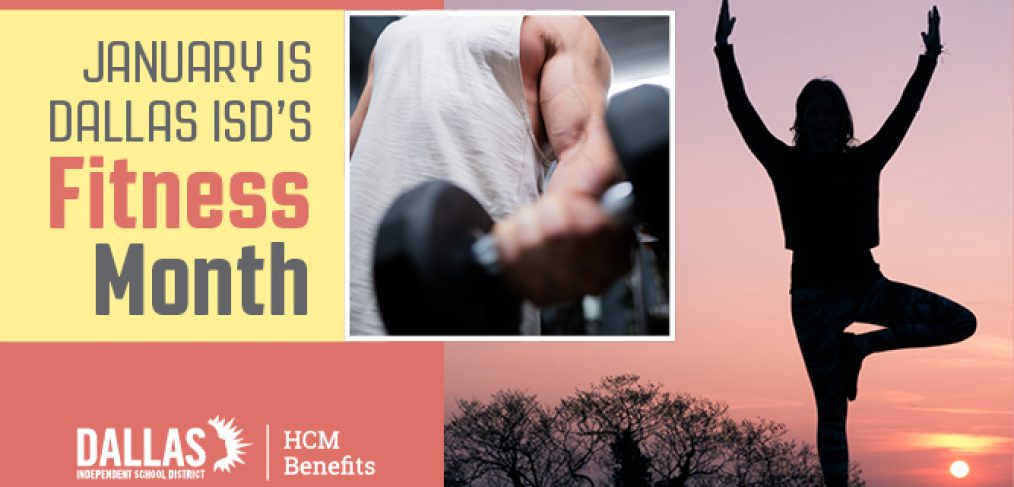
Fitness Month: Don’t get hurt
Regular exercise is good for your body and safe for most everyone. However, with any type of activity, there is a chance you can get hurt. Exercise injuries can range from strains and sprains to back pain. With a little planning, you can prevent injury and stay safe during exercise.
MedlinePlus—a service of the National Library of Medicine (NLM), the world’s largest medical library, which is part of the National Institutes of Health (NIH)—offers a series of tips on how to prevent common injuries when starting a fitness routine as well as information on a variety of health topics.
What Causes Exercise Injuries?
Some of the most common causes of exercise injuries include:
- Exercising before your body has warmed up
- Repeating the same motion over and over again
- Not having proper form for your exercise
- Not resting in between workouts
- Pushing your body too hard or too quickly
- Doing an exercise that is too strenuous for your level of fitness
- Not using proper equipment
Warm up and Cool Down
Warming up before exercise gets your blood flowing, warms up your muscles, and helps you avoid injury. The easiest way to warm up is to exercise slowly for the first few minutes, then pick up the pace. For example, before running, walk briskly for 5 to 10 minutes.
You should also cool down after exercise to bring your heart rate and body temperature back to normal. Cool down by ending your routine at a slower pace for the last 5 to 10 minutes.
To Stretch or not to Stretch
To stay flexible, you should stretch at least 2 times a week. But it is unclear whether stretching really helps reduce injury.
You can stretch either after you have warmed up or after you exercise.
- DO NOT stretch cold muscles.
- Hold stretches for no longer than 15 to 30 seconds.
- DO NOT bounce.
Choose Your Exercise Wisely
If you have not been active, or have a health condition, talk with your health care provider to make sure you are healthy enough for exercise. Ask what types of exercise might be best for you.
If you are new to exercise, you may want to start with low-intensity options such as:
- Walking
- Swimming
- Riding a stationary bike
- Golf
These types of exercise are less likely to cause injury than higher-impact activities like running or aerobics. Contact sports like soccer or basketball are also more likely to cause injury.
Use the Right Equipment
Using safety equipment can greatly reduce your risk of injury.
Safety equipment for your sport may include:
- Footwear
- Helmets
- Mouth guards
- Goggles
- Shin guards or other protective guards
- Kneepads
Be sure you use the right type of equipment for your sport. For example, DO NOT play tennis in running shoes. Wear a ski helmet, not a bike helmet, when downhill skiing.
Make sure your exercise equipment:
- Fits you properly
- Is the right design for your sport or activity
- Is in good working condition
- Is used correctly and consistently
Learn Good Form
If you are new to an exercise or sport, consider taking lessons to learn the basics. Learning the right way to do an exercise or sport can help prevent injury. Look for lessons in your community or through sports or outdoors organizations. You can also consider hiring a personal trainer.
Cross Train
To help prevent overuse injuries, vary your workouts. For example, instead of running three days a week, cycle one day and run two. You will use a different set of muscles and still get a good workout.
Listen to Your Body
Forget the old saying “no pain, no gain.” Of course, to build strength and stamina, you will need to push your body. The key is to push slowly and gradually. You can expect sore muscles after your workout. But you should never feel pain when exercising. If you feel pain, stop right away.
Being tired all the time can also be a sign that you may be overdoing it. In general, avoid increasing these 3 things all at the same time:
- Number of days you exercise
- Length of time you exercise
- How hard you work out
MedlinePlus [Internet]. Bethesda (MD): National Library of Medicine (US); [updated 2020 Jun 22]. How to avoid exercise injuries; [cited 2021 Jan 21]; Available from: https://medlineplus.gov/ency/patientinstructions/000859.htm



